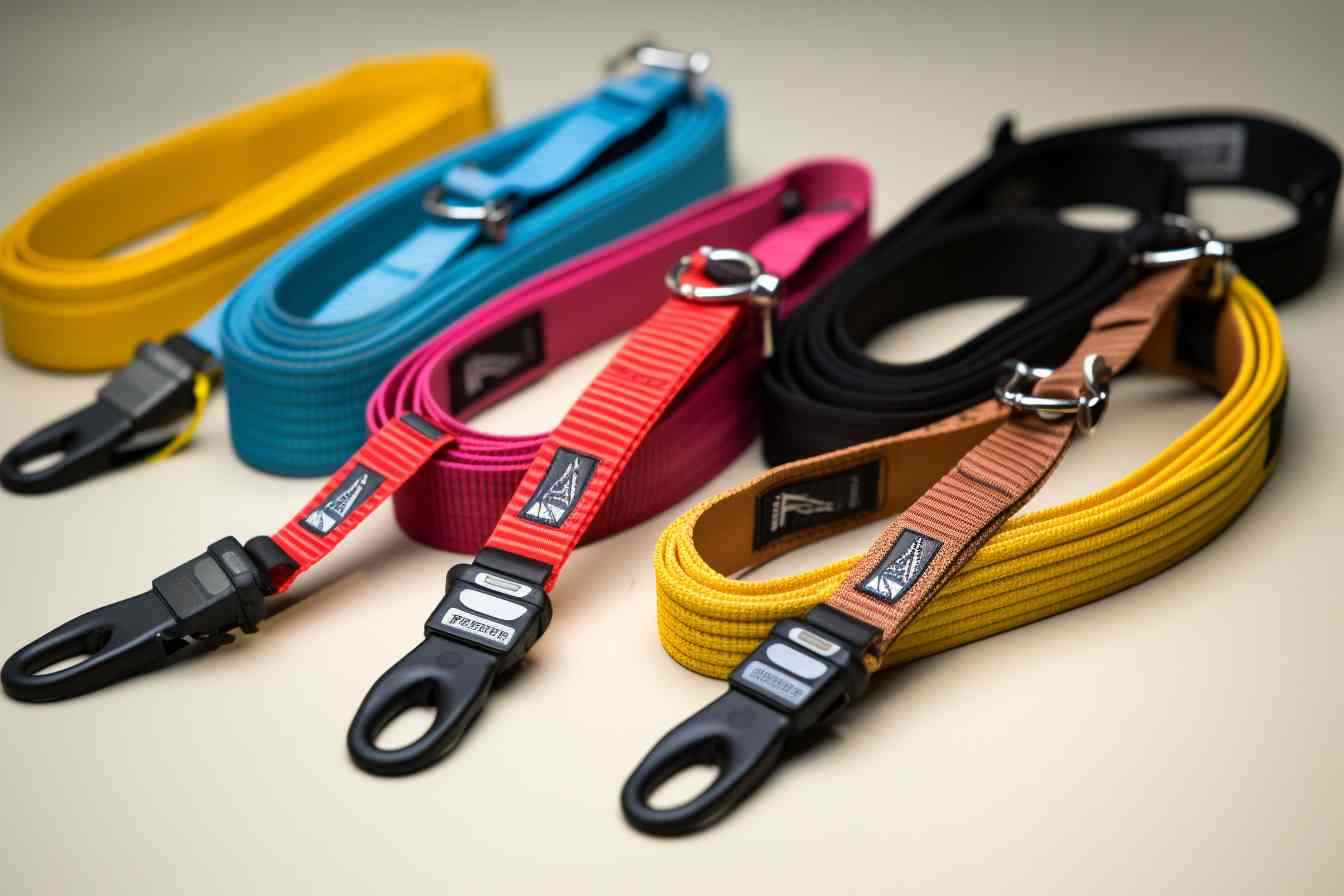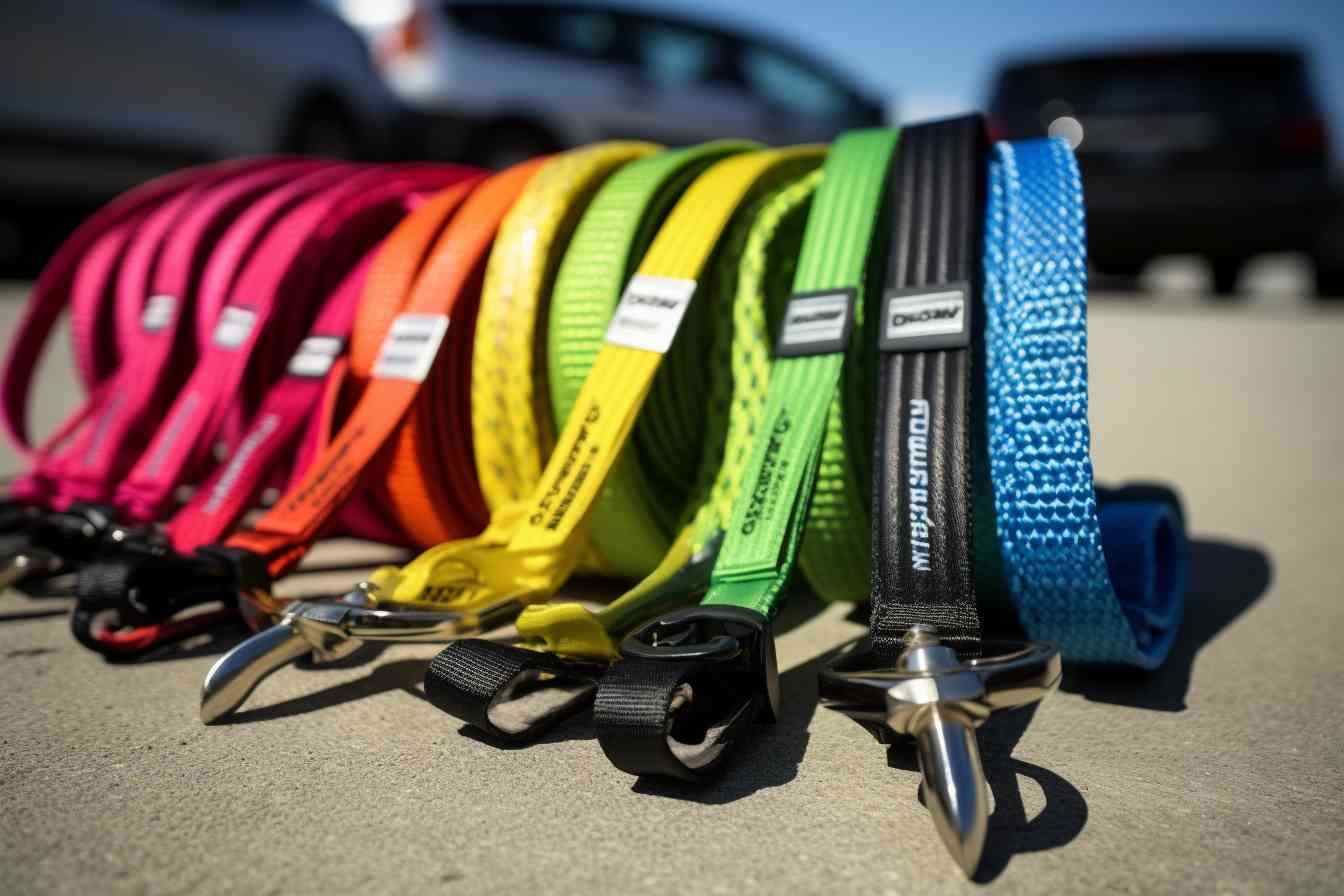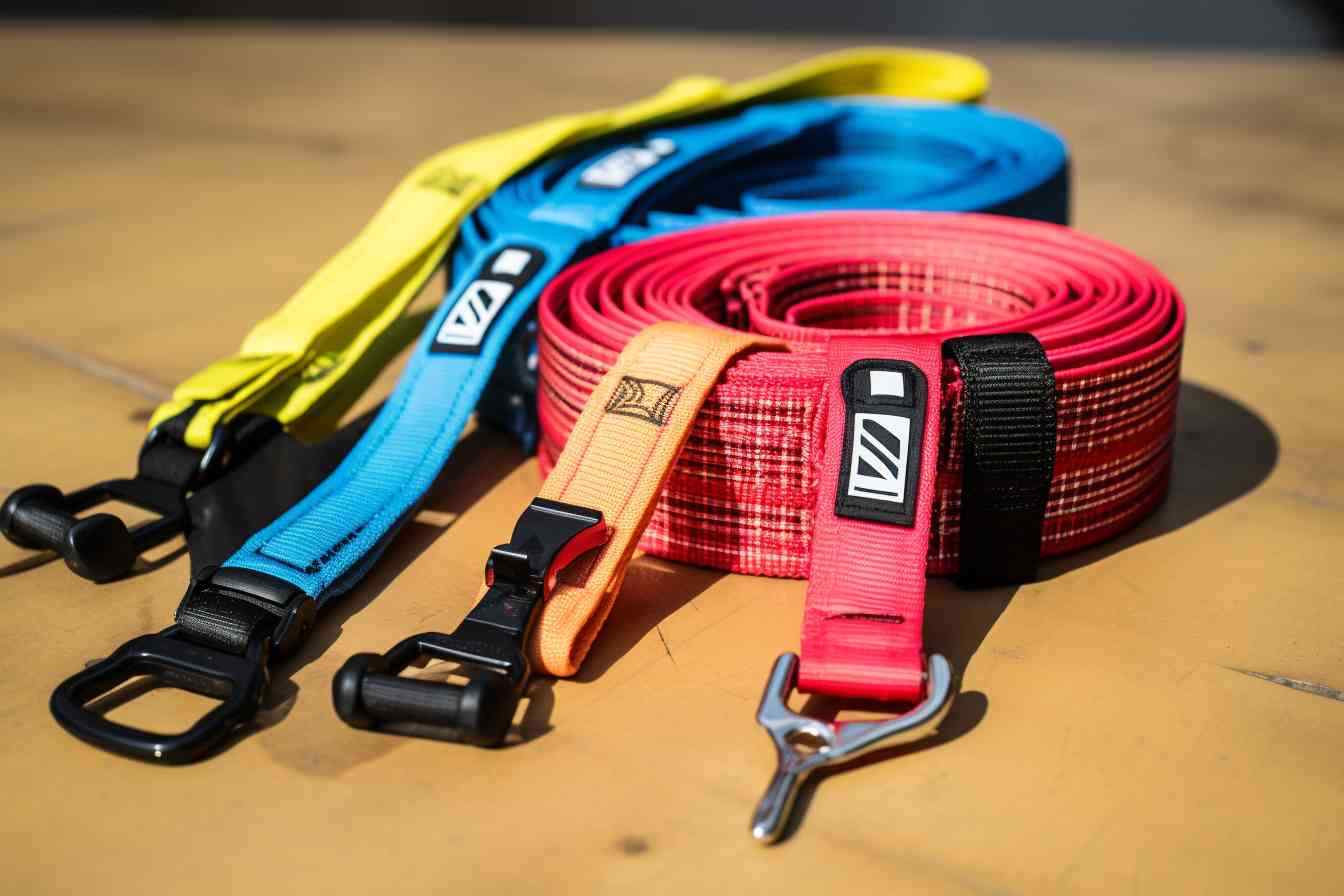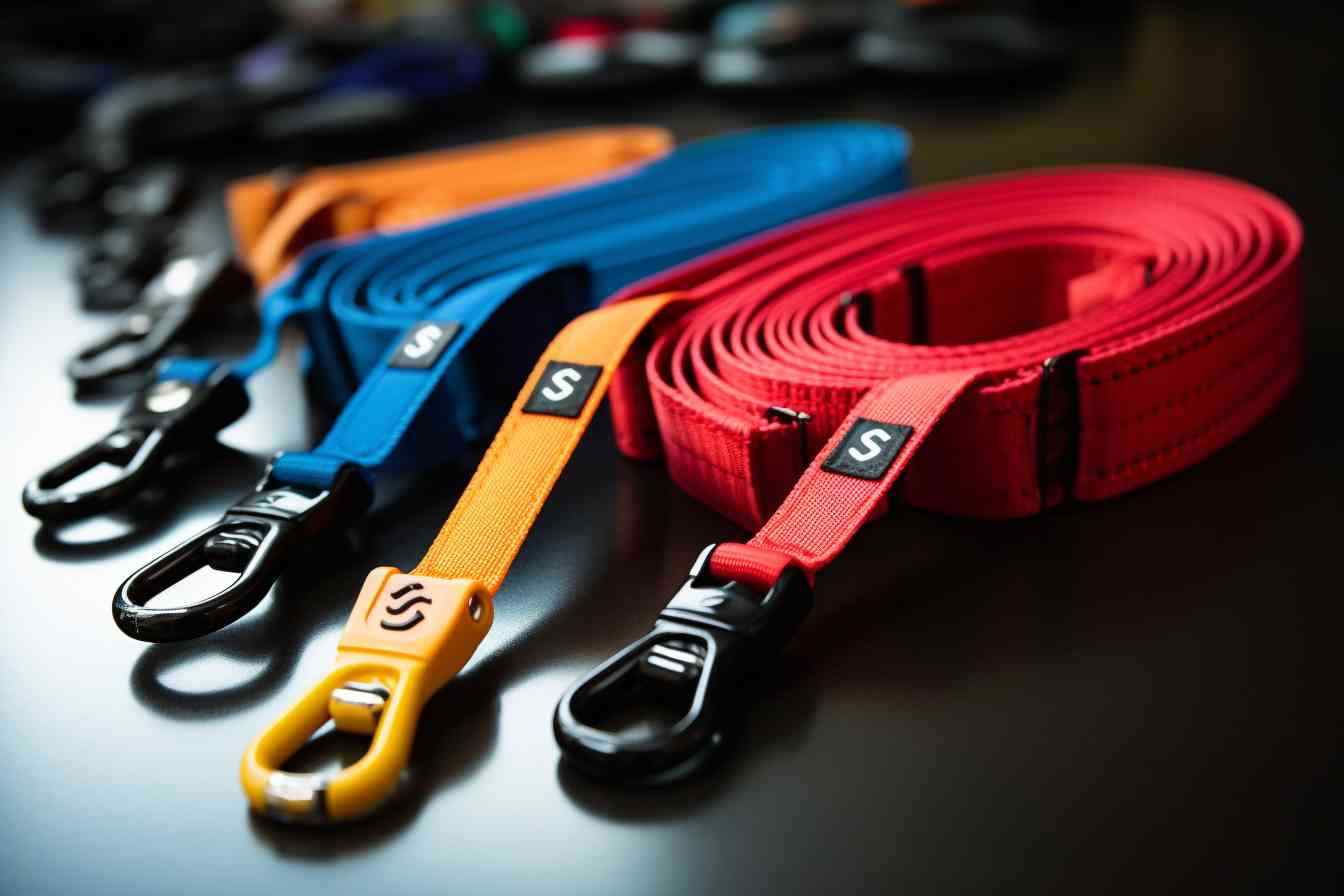The Ultimate Guide to Choosing the Perfect SUP Leash

Summary
- Intro: How To Choose The Correct Sup Leash And Length
- How Do I Choose A Sup Leash?
- What Kind Of Leash Should I Use For Sup?
- Is A Coiled Or Straight Sup Leash Better?
- How Do You Know What Length Paddle Board To Get?
- Final Verdict
- Frequently Asked Questions
- How do I pick the right SUP leash for my board?
- Can the leash length affect my SUP experience?
- What’s the safest SUP leash to use in open water?
- Are there any special features to look for in a SUP leash?
- Does the SUP leash thickness matter?
- Are some SUP leashes better for beginners?
- What’s the deal with ankle vs. calf leashes?
- Does the water condition impact the leash choice?
- How should I maintain my SUP leash?
- Any tips on storing my SUP leash when not in use?
- What should I avoid when choosing a SUP leash?
- Related Video
- Frequently Asked Questions
Intro: How To Choose The Correct Sup Leash And Length

Feelin’ a bit tangled in the decision-making process for a SUP (stand-up paddleboard) leash and length? Well, my friend, let me guide you through the waves of decision-making with some handy tips so that you don’t end up with a leash that’s more hassle than helpful.
When you’re in the market for the perfect leash, it’s like picking out a dance partner – it’s gotta match your moves and keep up without stepping on your toes! The leash tether between you and your board is crucial; trust me, you don’t want to swim back to shore every time you wipe out. So, let’s dive in, shall we?
Consider this: the type of SUP you’re into is a game-changer for the leash you’ll need. We’ve got coiled leashes, straight leashes, and those hybrids that can’t make up their mind; each serves a purpose. Coiled leashes? Great for keeping the cord away from your feet while cruising flat waters or racing without tripping you up – Smart, eh? Straight leashes are your go-to for surfing waves; they’re less likely to get tangled when you’re splashing about in the surf. The hybrid? Well, it’s like having the best of both worlds if you can’t decide.
Now, let’s talk size – it’s all about balance. Too short and you’ll have your board smacking you in the shins; too long and you’ll feel like you’re wrangling a giant squid. A good rule of thumb is to pick a leash about the same length as your board, maybe a foot longer if you want some wiggle room. It’s all about giving your board enough leeway without letting it go into a full-on wanderlust mode.
Remember, a leash isn’t just a random accessory – it’s a crucial part of your SUP kit. Just like you wouldn’t wear flip-flops for a marathon, don’t skimp on the right leash. It’s about safety, convenience, and, frankly, keeping the good times rolling without a hitch – or hitching a ride without your board. Keep these pointers in mind, and you’ll be tethered to fun times in no time!
How Do I Choose A Sup Leash?

Well, let me dive right in. When it’s time to snatch up a SUP leash, you gotta think about a bunch of stuff - like, where you’re gonna paddle. If I’m surfing waves, then I tell you what, I need a leash that’s at least as long as my board, maybe even a tad longer. But for flatwater? I go with something cozier, not too long, so it won’t tangle.
The style’s another thing to chew on. Choice is yours, whether you’re all about the coiled leashes that keep things tight and out of the water or the straight ones that are aces for catching waves. Speaking of waves, gotta match the thickness of that leash to the size of ‘em. Bigger, meaner waves? Bulkier leash - that’s the ticket. It’s all about not having that leash snap when you’re getting tossed around like a salad at sea, you know?
And don’t even get me started on the cuff. That bad boy hooks up to your ankle or calf, and it’s gotta be comfy. Because if you’re out there on the water for hours, the last thing you want is your skin getting rubbed raw like you’ve been sandpapered.
Let’s talk attachment points, too. They say where you tether that leash on your board makes a difference. I usually hitch it to the tail end, but that’s just how I roll. It keeps my board from shooting off, playing hard to get when I take a spill.
Choosing the right SUP leash can feel like you’re trying to solve a puzzle where the pieces keep changing shapes - but stick with me, and you’ll find that perfect sweet spot.
What Kind Of Leash Should I Use For Sup?

You know, when it comes to SUPing – that’s stand-up paddle boarding for the uninitiated – the leash is your lifeline, literally. That stretchy cord tethering you to your board is a non-negotiable. It keeps your trusty steed close if you take a spill – and let’s be real, we all take a dip now and then.
Now, picking the right kind of leash? It’s a smidge overwhelming with all the options out there. For flatwater paddling, like serenely cruising on a lake or a calm bay, a straight leash is your BFF. It’s simple, doesn’t drag in the water, and does the trick. But oh boy, when you’re braving the waves, a coiled leash – those springy ones – is your go-to. They’re ace at stopping the cord from getting snagged underfoot, and believe me, tripping over your leash is about as embarrassing as it gets.
Here’s the crux though: length matters too. Match it to your board – give or take. If you’re aboard a ten-footer, snag yourself a ten-foot leash. But hey, don’t hold on to that rule like it’s gospel, sometimes you might want a tad more or less, depending on the conditions. Just remember, safety’s the main gig, so don’t skimp out on quality for a few bucks. It ain’t worth it, trust me. Go for the sturdy ones with a reliable swivel – it’ll save you a whole heap of tangling hassles later on.
And hey, when you’re all set up, you can paddle out with confidence, knowing you’ve got your safety box checked. Now, isn’t that a comforting thought?
Is A Coiled Or Straight Sup Leash Better?

So, you’re in the market for a SUP leash, right? It’s kind of a big deal if you ask me because it’s not just about keeping your board close when you fall into the water—it’s about safety, too. Now, you’ve got two choices here: coiled or straight. Honestly, it depends on what you’re lookin’ for.
The coiled ones? They’re like those old-school telephone cords, all springy, which is pretty neat because they tend to stay on the board and out of the water. That means less drag, and nobody enjoys dragging, like, half the ocean behind ‘em when they’re trying to paddle out. But here’s the thing, they can stretch a lot when you fall in, which can be a bit jarring if you’re not expecting it—and nobody wants a surprise SUP to the face on a chill day, am I right?
On the flip side, straight leashes are, well, straight. They just hang there like a relaxed sloth from your ankle to your board. They’re the old reliables. No spring, no surprises. Plus, if you’re into longer rides—like touring or racing—a straight leash is usually the way to go. You know, because it’s all about predictable, steady tethering.
So it’s like picking out a new buddy to join you on the waves. Sure, each has its quirks, but it really boils down to what floats your boat—or your SUP, in this case. Are you a casual cruiser or a distance-devouring water warrior? Choose accordingly, my friend, and remember, the water’s waiting for ya.
How Do You Know What Length Paddle Board To Get?
Gosh, paddle boarding’s such a blast, isn’t it? There’s nothing like the feeling of gliding over the water, soaking up the sun—total freedom! But let’s chat about one of the nuts and bolts of paddle boarding – choosing the leash length. It’s a deal-breaker, really. Get this wrong, and, whoops, there goes your board after a wipeout!
Now, the golden rule of thumb for SUP leashes is pretty simple: Your leash should roughly match or be a tad longer than your paddle board. Why, you wonder? Well, it’s all about safety and convenience, my friends. If your leash is too short, getting yanked by your board during a fall can be jarring—and nobody wants an unplanned reunion with their board.
On the flip side, a leash that’s too long can be a drag – literally. It might snag on stuff underwater, like seaweed or rocks, which is a hassle you don’t need. So let’s say your board is a nifty 10-footer. Aim for a leash around 10 to 12 feet. Gives you a nice, comfy buffer.
Here’s the kicker, though. You’ve gotta think about the conditions. Calm waters? You can get by with a leash that’s close to the length of your board. But if you’re surfing or in choppy waters, a longer leash can provide that extra bit of space to avoid being smacked by your board when the waves get feisty. Be savvy, stay safe, and keep that paddle board from doing a Houdini on you—choose the leash length that’s just right for your ride.
Final Verdict
Oh man, choosing the right SUP leash and length, it’s like picking out the perfect pair of shoes – it’s gotta fit just right or you’re in for a world of discomfort. The last thing you want is to be caught in a tussle with Mother Nature and end up watching your board kiss goodbye because your leash was too long or, heavens forbid, too short.
Here’s the lowdown on nailing it – your tether is your lifeline when you’re out paddling. And trust me, I’ve had my share of whoopsies to know the importance of getting that SUP leash length spot-on. You’re aiming for that Goldilocks zone – not too long that your board becomes a projectile during a wipeout, and not too short that you can’t move freely. It’s all about balance, my friend.
Your board size usually dictates leash length. Got a 10-foot board? Aim for a leash that’s around the same length or just a bit longer. And here’s a nifty pointer – if you’re braving the wild, untamed surf, a coiled leash will keep it from dragging in the water and snagging every piece of seaweed in a five-mile radius. Flatwater paddler? Go straight, my friend. That way, it’ll trail behind without causing a fuss.
Now, the final verdict isn’t just about length; it’s about the conditions, your paddling style, and a dash of personal preference. Just remember, the leash is your unsung hero. Choose wisely, paddle safely, and enjoy the glide. Keep it simple, and don’t overthink it. Above all, stay stoked, paddle on, and respect the leash law. It’s there for a reason, you know?
Frequently Asked Questions
How do I pick the right SUP leash for my board?
Well, I feel choosing the right SUP leash hinges on the type of boarding you’re doing, pal. If you’re hitting the waves, a coiled leash will keep it from dragging in the water. But for flatwater paddling, straight leashes are fab since they won’t get tangled in weeds. It’s all about matching the leash to the activity – makes sense, right?
Can the leash length affect my SUP experience?
Absolutely! You’ve got to match the leash length to your board size. Too short, and you’ll be tripping over it; too long, and it becomes a real nuisance, dragging in the water. I’d say go for a leash that’s about the same length as your board or a tad longer for safety’s sake.
What’s the safest SUP leash to use in open water?
Safety first, I always say! A coiled leash is your best bet for open water. It offers less drag and won’t snag on anything floating around. Plus, it’s easier on the legs, so you won’t feel like you’re dragging an anchor – and who wants that?
Are there any special features to look for in a SUP leash?
You bet! I’d look for a leash with a comfortable ankle cuff – you don’t want it chafing you while you’re out on the water. A quick-release mechanism is also a smart choice, just in case you need to free yourself in a jiffy.
Does the SUP leash thickness matter?
Thickness? Sure does! A thicker leash can handle more force, which is great for surfing. But, if you’re cruising on calm waters, a thinner leash is lighter and less bulky. It’s all about the conditions you’ll be facing out there.
Are some SUP leashes better for beginners?
If you’re just starting out, I’d recommend a coiled leash. It’s less likely to trip you up, and it’ll give you one less thing to worry about. Learning’s already got its challenges, right?
What’s the deal with ankle vs. calf leashes?
Oh, it’s all about personal preference and comfort. Ankle leashes are pretty common, but calf leashes can make it easier to get back on your board after a spill. Try ‘em both and see what feels right!
Does the water condition impact the leash choice?
For sure! Choppy waters and surfing waves call for a sturdy, coiled leash. In contrast, for serene lake paddles, a lighter, straight leash will do the trick. It’s all about adapting to the conditions.
How should I maintain my SUP leash?
Maintenance is key! Rinse that leash with fresh water after each use, and keep it out of the sun when not in use. Check for wear and tear regularly – a broken leash is no friend of mine.
Any tips on storing my SUP leash when not in use?
You want to keep it in tip-top shape, don’t you? Just hang it up in a cool, dry place. Avoid crumpling it up; keep it neatly coiled. Trust me, taking care of your gear means it’ll take care of you out on the water.
What should I avoid when choosing a SUP leash?
Steer clear of cheap materials that can break easily, and leashes that aren’t suited for your SUP activity. Match the leash to your specific paddling style, and you can’t go wrong.


Comments